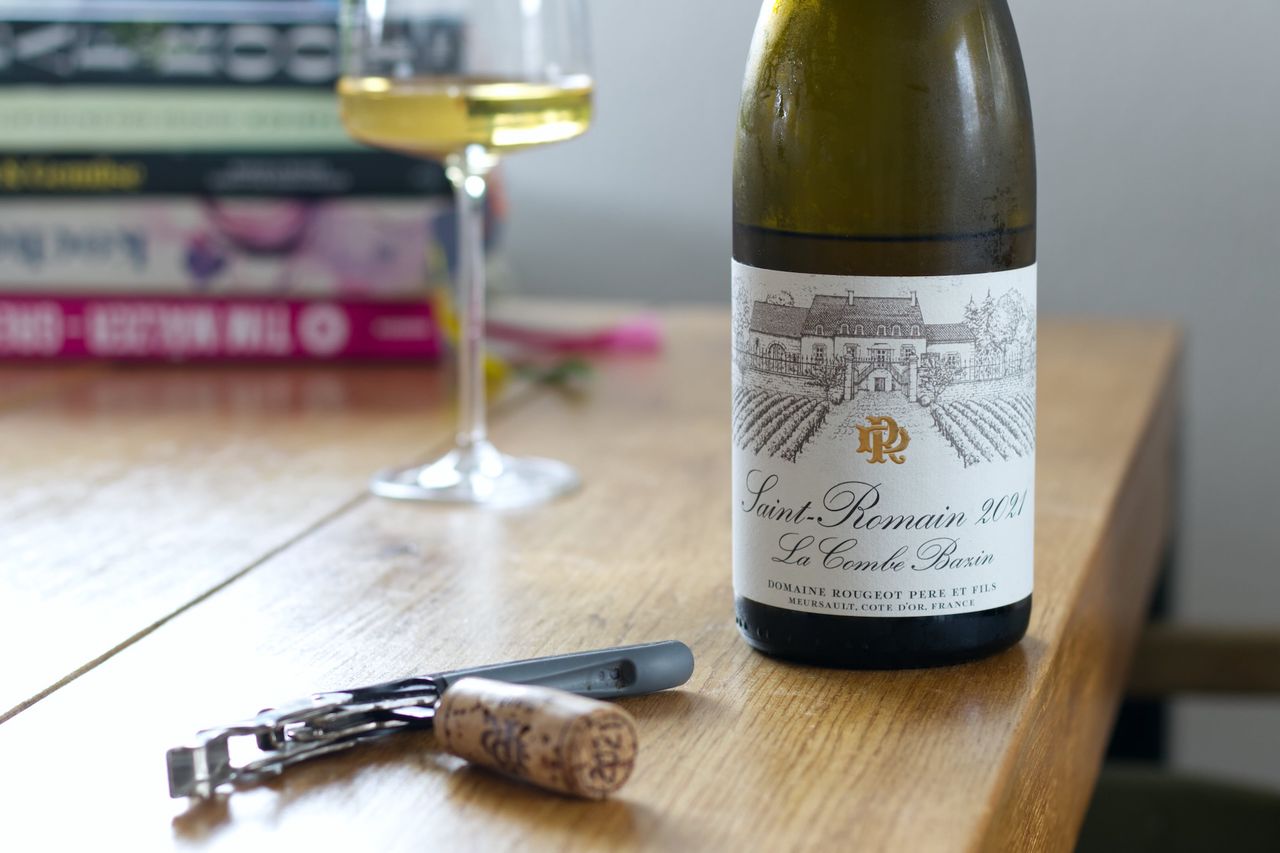Domaine Rougeot - Saint-Romain La Combe Bazin 2021
Continuing through Burgundy with this bottle of Saint-Romain La Combe Bazin 2021 from Domaine Rougeot Père et Fils.

Not even three kilometers as the crow flies separate the vineyards from last week’s wine and today’s. So, we’re still journeying through Burgundy, and still in the same area. Just continue on the road from Meursault, through Auxey-Duresses, and then toward Saint-Romain, where the climat Combe Bazin lies up the hill on the right. Unlike last week, where the vines faced east, here they face south or southwest, which makes quite a difference in terms of sunlight. Otherwise, Saint-Romain is a bit smaller than Auxey-Duresses in terms of area, with the exact figures varying depending on the source and year, but the current vintage should be just under 150 hectares. There’s a slightly higher proportion of white grapes compared to red, and there are no Grand Cru or Premier Cru vineyards. However, the climat can be listed on the label, and it is on today’s bottle. The rules for what can go on a label are complex and somewhere between politics and tradition, both terms I use at work to describe a very particular kind of situation. One day, I’ll dive deeper into the subject, but for now, it’s enough that “La Combe Bazin 2021” is on the label.
Marc Rougeot runs the winery together with his son, Pierre-Henri, in the third and fourth generations, respectively. They manage about 13 hectares of vineyards around Meursault, which were converted to organic farming in 2020, and in 2021, they began transitioning to biodynamic practices. The Chardonnay from vines up to 90 years old is hand-harvested, pressed immediately upon arrival, and then chilled for two days to allow the sediment to settle. Afterward, it’s fermented directly in barrels, and aged for 18 months in barriques, with 15% of the barrels being new and the remaining 85% between one and four years old.
On the nose, there’s a lot of robust orchard fruit, cool, taut, and tightly knit. Behind that, you get a hint of herbs and a touch of oak, but the wine is still quite muted right after uncorking. On the palate, there’s a lot of texture, followed by acidity and a burst of juiciness that builds at the back, making it almost too easy to drink despite the reserved nose. It’s important to pace yourself, though, because you might miss how long the wine lingers on the tongue. For what feels like minutes, the wood and citrus share space in the center of the palate. Perhaps this is the height of winemaking craftsmanship: creating a wine that lingers for minutes but is still so easy to drink. A wine that tests your patience and pushes your limits. A duel between savoring and pouring more, between being impressed and continuing to drink. As you wrestle with yourself, the Chardonnay becomes more nutty and herbaceous on the nose. It’s really lovely. Quite different from the Auxey-Duresses last week, more robust, intense, fuller, and without any reduction. Neither better nor worse, just different.
And it becomes even more robust overnight. You can already sense it when you smell it, but it really comes through on the palate. The apple core lingers and refuses to disappear. It’s so balanced, so harmonious that breaking down individual aromas seems both difficult and completely unnecessary. This wine is about the overall experience, not a scavenger hunt for specific aromas. In fact, 80% of this bottle is about the sensation on the tongue, not the scent. A hint of mirabelle plum here, some spice there, stone, the apple core, and the juiciness. I wonder how much of this is the winemaker’s influence compared to last week’s wine, and how much is the vineyard. The reduced reduction is certainly the winemaker’s choice, but the more robust, fuller character may be due to the different orientation, the added sunlight that comes with facing southwest compared to the east-facing vineyard by the forest. To really figure it out, you’d probably need to taste both ranges side by side. But that’s a thought I quickly let go of. Burgundy will always remain a sale bottle here, an intriguing single bottle there, and a leftover bottle elsewhere. That’s okay. And for me, a full bottle is always somehow more enjoyable than ten small sips at a tasting, even if you don’t get as broad a view that way. This bottle doesn’t care about any of that. It’s beautiful, and now it’s empty anyway.